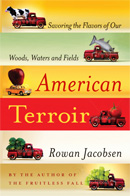A Winter Idyll in Chatham
Nov 27, 2017
For years I’ve had a special weakness for the oysters from Chatham, out on the raggedy elbow of Cape Cod. They epitomize everything a Cape Cod oyster should be: Hefty, firm, sweet, and wicked salty. Chatham is also the prettiest town on the Cape, it’s waterfront laced with estuaries and graced with endless expanses of beach. There’s only one grower in town, Chatham Shellfish, and they’ve been at it since 1976. That’s when John Richards scooped up a lease and began farming it, which he’s been doing ever since, even as he watched all the other oystermen in town disappear. Richards now lays claim to the last oyster grant in Chatham.
It’s odd that Chatham has disappeared from the radar of most oyster fans, because it long had a premier reputation in those circles. No less an authority than Samuel de Champlain noted the oyster beds of Chatham in 1606. The island guarding the harbor was originally known as Oyster Island, and the salt pond that curls into the heart of town is still known as Oyster Pond. This is where Chathams come from.
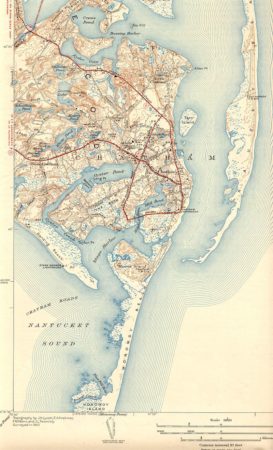
Oyster Pond, Chatham
The handsome river connecting Oyster Pond to the sea is known as Oyster Creek or Oyster Pond River.For most of the 19th century, it was lined with oyster “farms.” Oystermen would buy bushels of oysters from New York or, later, the Chesapeake, plant the oysters in the Oyster Pond River, and salt them up for a few months before putting them on the train to the cities. It was a big deal, and it went on for a long time, and then it dried up completely. A handful of old oyster shanties from that era still remain preserved at Chatham Shellfish. Here’s farm manager Steve Wright, who has been the point person at Chatham Shellfish for many years, in front of a few of them.
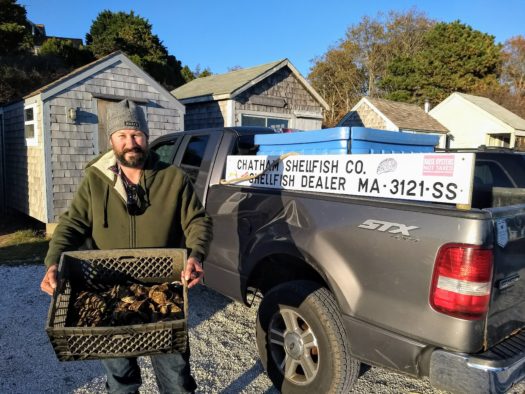
Steve Wright, oyster whisperer
One of the best of the shanties, right on the water, has even become Chatham Shellfish HQ. It was recently fixed up (I’m still angling for a night on the couch some dreamy summer evening), but it still harbors some of the original signs and equipment.
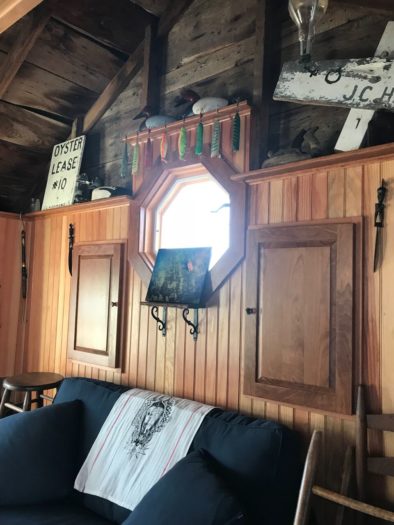
Note the original boards beneath the new walls…
So, classic oyster spot. Tradition, beauty, deep Cape vibe. But what you really want to know is: How are the oysters? Briny, briny, briny is the answer, which are three of my favorite words. Thank Nantucket Sound and the great Atlantic ocean, which comes pouring up the river on the six-foot tides twice a day. You can see it lurking just beyond the island over Steve and John’s shoulder here.
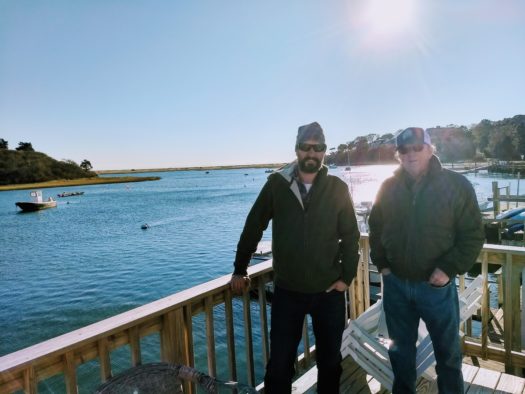
Steve Wright, John Richards, and the Oyster Pond River
And now, for those few of you who have read this far, a reward. Steve farms his oysters using a variety of methods, mostly rack-and-bag and open trays, but every winter he scatters some survivors on the bottom of Oyster Pond and lets them slowly mature there, harvesting them by hand with an old-fashioned rake throughout the winter. Planted on the bottom, they get thick-shelled, meaty, and incredibly dense of flavor. They are the Chatham oysters I fell in love with. Steve calls them Private Stock, and he doesn’t advertise them. You have to know to ask for them. Tell him Oysterguide sent you.
Second secret reward: Steve also keeps a couple of trays full of the monster oysters that get too big for halfshell service. These are so big and strong that they are deadly to all but the toughest oyster blades. They are also the best oysters in the world for grilling, frying, and stew. Steve calls them his Golden Gorillas. See if you can spot the Gorilla:
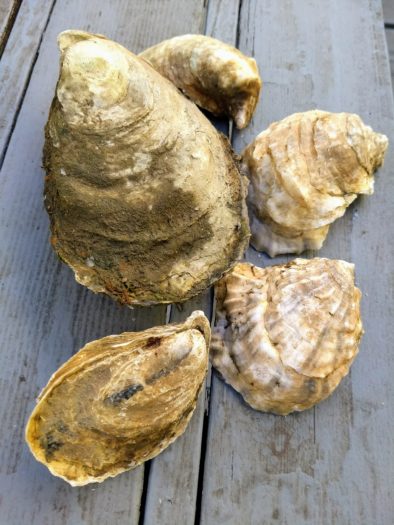
One of these things is not like the other.
’nuff said. Happy Holidays, everyone.
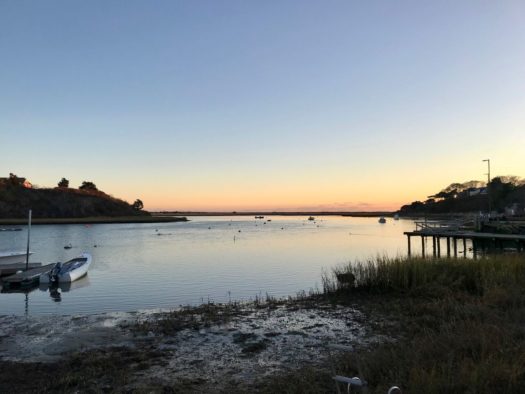
« PREVIOUS: Why It’s Ostreophile and Meroir
» NEXT: Devil’s Purse Oyster Stout
 Recent Posts
Recent Posts